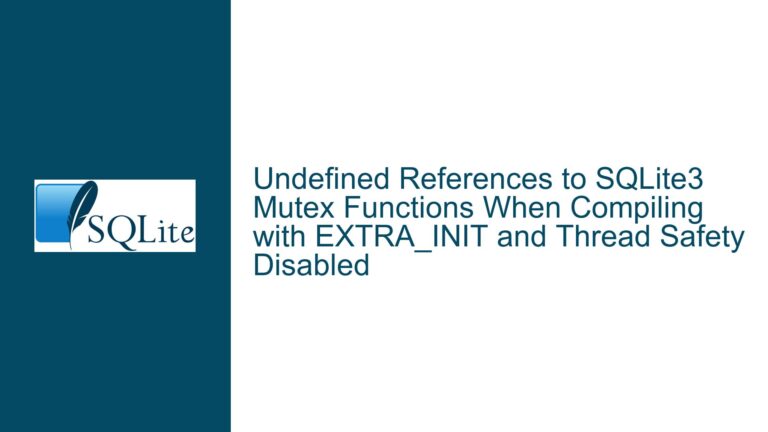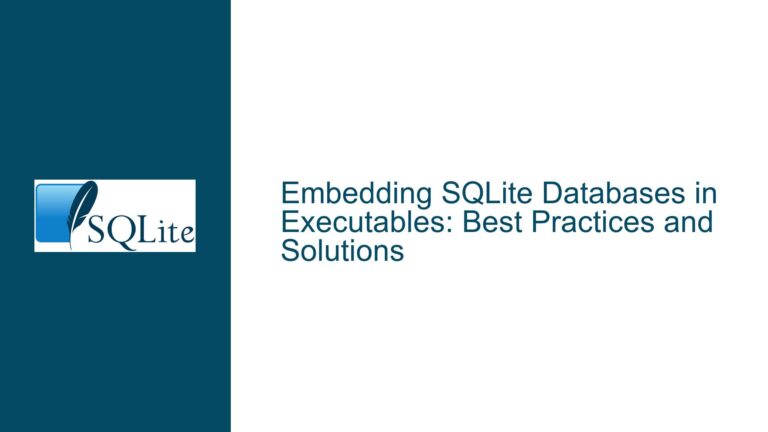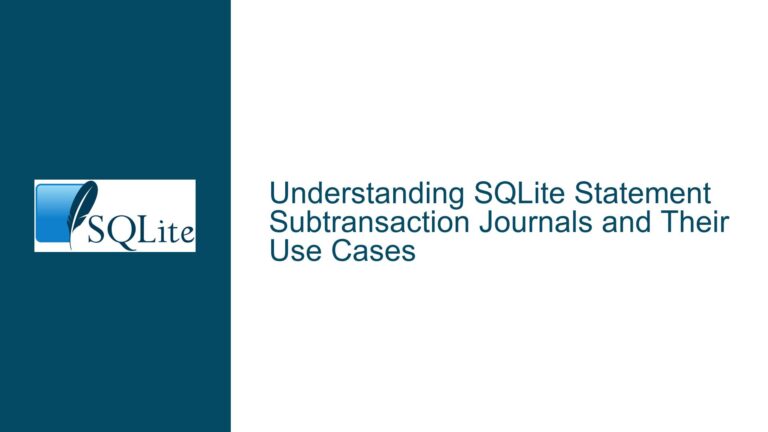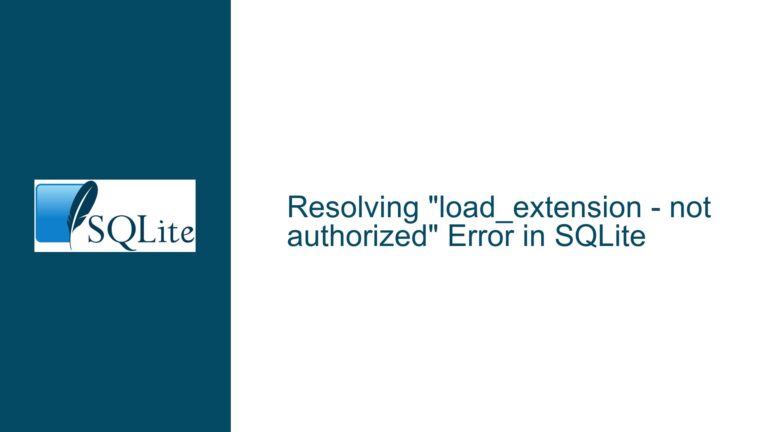Resolving Reduce/Reduce Conflicts via Precedence in LEMON: Rationale and Implications
Understanding LEMON’s Approach to Reduce/Reduce Conflict Resolution
Reduce/reduce conflicts occur in LALR(1) parser generators when a parser state contains two or more production rules that could be applied to reduce the same sequence of tokens. These conflicts are typically considered more severe than shift/reduce conflicts because they indicate structural ambiguity in the grammar: the input can be parsed in multiple ways, leading to different parse trees. Traditional parser generators like Bison, YACC, or their derivatives (Byacc, Kmyacc) flag reduce/reduce conflicts as unresolved ambiguities that require manual intervention. LEMON, the parser generator used by SQLite, takes a distinct approach by leveraging precedence and associativity rules to automatically resolve these conflicts.
The core issue arises when grammars that compile without warnings in LEMON produce numerous reduce/reduce conflicts in Bison-derived tools. For example, the SQLite grammar generates 52 reduce/reduce conflicts in Bison but reports zero conflicts in LEMON. Similarly, the Futhark grammar exhibits 35 conflicts in Bison but none in LEMON. This discrepancy stems from LEMON’s unconventional use of precedence rules to suppress reduce/reduce conflicts.
LEMON’s Conflict Resolution Logic
LEMON’s source code explicitly handles reduce/reduce conflicts by comparing the precedence of the last terminal symbol (precsym) in the conflicting productions. If one production’s precsym has higher precedence than the other, the lower-precedence rule is marked as resolved (RD_RESOLVED). If the precedences are equal or undefined, the conflict is retained (RRCONFLICT). This logic mirrors how LEMON resolves shift/reduce conflicts but extends it to reduce/reduce scenarios:
if( apx->type==REDUCE && apy->type==REDUCE ){
spx = apx->x.rp->precsym;
spy = apy->x.rp->precsym;
if( spx==0 || spy==0 || spx->prec<0 || spy->prec<0 || spx->prec==spy->prec ){
apy->type = RRCONFLICT;
errcnt++;
}else if( spx->prec>spy->prec ){
apy->type = RD_RESOLVED;
}else if( spx->prec<spy->prec ){
apx->type = RD_RESOLVED;
}
}
This approach allows LEMON to silently resolve conflicts that would otherwise require grammar adjustments. For instance, in SQLite’s expr rules, precedence directives for operators like AND, OR, or COLLATE implicitly suppress reduce/reduce conflicts. Bison, lacking this feature, surfaces all such conflicts as warnings.
Implications for Grammar Designers
LEMON’s behavior prioritizes practical usability over strict ambiguity detection. By treating precedence as a universal resolver, it enables the creation of complex grammars (e.g., SQL) that would otherwise be unwieldy. However, this design masks potential ambiguities, creating a false sense of security. Developers might inadvertently introduce reduce/reduce conflicts in parts of the grammar where precedence rules are not rigorously defined, leading to subtle parsing errors.
The SQLite grammar exemplifies this trade-off. Its heavy reliance on precedence-driven conflict resolution allows it to remain concise and maintainable. Forcing it to comply with Bison’s stricter conflict checks would require extensive refactoring, including splitting non-terminals, redefining production orders, or introducing mid-rule precedence markers—changes that could compromise readability and performance.
Underlying Factors Influencing Conflict Resolution Discrepancies
1. Philosophical Differences in Parser Generator Design
LEMON and Bison embody divergent philosophies for handling grammar conflicts:
Bison/YACC: These tools treat reduce/reduce conflicts as unresolved ambiguities. They require developers to explicitly disambiguate the grammar, either by rewriting productions or using precedence declarations limited to shift/reduce conflicts. This conservative approach ensures that all conflicts are surfaced, but it places a higher burden on grammar designers.
LEMON: Designed for real-world usability, LEMON extends precedence resolution to reduce/reduce conflicts. This reflects a belief that many such conflicts are benign or resolvable via operator precedence. The SQLite team values this feature because it simplifies grammar maintenance and avoids the complexity of manually resolving dozens of conflicts.
2. Grammar Complexity and Practical Trade-Offs
Large grammars like SQLite’s involve numerous expression types with overlapping syntax. For example, the BETWEEN ... AND operator in SQL conflicts with logical AND due to shared token usage. In Bison, this creates a reduce/reduce conflict:
expr : expr BETWEEN expr AND expr
| expr AND expr
LEMON resolves this by assigning higher precedence to BETWEEN ... AND over standalone AND, allowing the parser to prioritize the former. Bison, lacking this mechanism, forces the grammar author to disambiguate manually—e.g., by splitting expr into separate non-terminals like expr_logical and expr_between.
3. Historical and Performance Considerations
LEMON was created explicitly for SQLite, which demands high parsing speed and minimal memory overhead. By resolving conflicts via precedence, LEMON generates smaller, faster parsers compared to those produced by Bison. This optimization is critical for embedded systems where SQLite operates.
Bison, in contrast, prioritizes correctness and explicitness. Its warnings serve as a safeguard against unintended ambiguities, even if they require more effort to resolve.
Diagnostic Techniques and Mitigation Strategies for Ambiguous Grammars
1. Detecting Hidden Reduce/Reduce Conflicts in LEMON
To identify conflicts masked by LEMON’s precedence rules:
Modify LEMON’s Conflict Resolution Logic: Temporarily disable precedence-based resolution for reduce/reduce conflicts by altering the code snippet responsible for marking rules as
RD_RESOLVED. Recompiling LEMON with this change will surface all conflicts, as seen in the modified SQLite grammar output.Cross-Validate with Bison: Use Bison’s
-Wcounterexamplesflag to generate detailed conflict reports. For instance, runningbison -v -Wcounterexamples sqlite3.g.yreveals 52 reduce/reduce conflicts, including examples like:expr IS NOT expr → expr (via two different reduce paths)This helps pinpoint rules where precedence might be masking conflicts.
2. Resolving Ambiguities Without Relying on Precedence
For critical sections of the grammar, rewrite productions to eliminate reduce/reduce conflicts:
Introduce Distinct Non-Terminals: Split ambiguous expressions into separate hierarchies. For example, define
expr_logicalandexpr_betweento isolateANDusage:expr : expr_between | expr_logical expr_between : expr BETWEEN expr AND expr expr_logical : expr AND exprMid-Rule Precedence Markers: Use
%precannotations to explicitly assign precedence within productions, overriding LEMON’s default behavior.
3. Adopting a Hybrid Approach
Where LEMON’s conflict resolution is desirable (e.g., for performance), validate the grammar with Bison-like tools to ensure no unintended ambiguities exist. This hybrid workflow combines LEMON’s efficiency with Bison’s strictness.
4. Best Practices for Precedence-Driven Grammars
- Audit Precedence Declarations: Ensure all operators and keywords have explicit precedence levels. Avoid leaving tokens with undefined (
%prec) or negative precedence. - Document Resolution Rationale: Annotate the grammar with comments explaining why specific conflicts are resolved via precedence.
- Test Edge Cases: Validate the parser against ambiguous inputs (e.g.,
a BETWEEN b AND c AND d) to confirm the intended parse tree is generated.
5. Case Study: SQLite’s expr Productions
SQLite’s expr rules leverage precedence to handle over 50 operators and keywords. For example, the COLLATE operator is assigned lower precedence than AND, ensuring that a AND b COLLATE c is parsed as (a AND b) COLLATE c. Without precedence-based resolution, this would require splitting expr into multiple non-terminals, complicating the grammar.
By understanding LEMON’s conflict resolution strategy and adopting rigorous validation practices, developers can harness its efficiency while mitigating the risks of hidden ambiguities. The key lies in balancing convenience with correctness—a principle exemplified by SQLite’s decades-long success in deploying a LEMON-generated parser.






